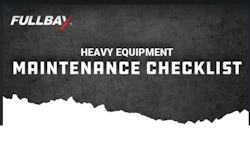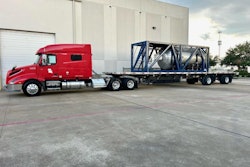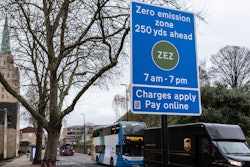The curse of the North American truck manufacturing market is an overwhelming availability of choices.
“Have it your way” was an advertising tagline success for Burger King in 1974. It has been a fundamental reality for fleets ordering trucks from OEMs for even longer.
There are published options and unpublished options. Depending on market dynamics, though, if the OEM is hungry enough for an order and the fleet is demanding enough, they often can get just about anything they ask for in terms of option content.
And it’s not just today’s options. Fleets have a huge influence on the OEMs’ future research and development product planning. When the 800-pound fleet gorilla in the room asks for something, there is a pretty good chance that an OEM will concede.
What the fleets often fail to realize is that all those choices they’ve created drive significant costs into the OEMs factories and supply chains. Henry Ford was able to make cost-effective Model Ts for 15 years, dominating the emerging automotive marketplace, by ruthlessly limiting product variation. He ultimately lost this fight to competitors who introduced annual product variations and new innovations.
Each choice by itself may seem like a small request, but each one introduces new permutations to the factory floor production line, to warehouse inventory parts management, to dealerships and maintenance bay training, and even to drivers.
If you ever have the opportunity to observe a truck OEM production line, you will marvel that nearly every truck can look entirely different from the one before and the one after. Analysis of option content choices makes literally millions of vehicle permutations possible. Sure, some are more likely than others, and some choices lock in other options, but the number of variations built is staggeringly large.
OEMs would love choice to disappear. They would love for the marketplace to return to Henry Ford’s Model T world, having any color you want as long as its black. But they recognize that the fleet choice genie was let out of the bottle a long time ago and will never get back in.
Or maybe it will?
The more complex the technology, the more expensive it is to develop. Autonomous vehicles, battery electric vehicles, hydrogen fuel cell vehicles, etc., are going to be introduced to the marketplace with probably very limited option choices. Those limited vehicle option choices will face extensive market pressure to expand. Fleets will want it their way rather than accepting what the OEM is offering.
But out of the box, these innovative new vehicles will limit fleets’ choices. They will be purpose built for specific duty cycles. Fleets choosing to use these vehicles outside of those limited duty cycles will be risking failure.
A simple blatant example of this is the endless discussion on how inappropriate battery electric vehicles (BEVs) are for heavy-duty long haul. It seems irrelevant to industry leaders that none of the OEMs offering current production BEVs have suggested they are intended for anything more than local, urban and short regional haul operations. It seems irrelevant that most of these offerings are day cabs or very short sleepers. It seems irrelevant that all these vehicles are freight weight limited and have ranges under 400 miles per charge, often only 200 miles or less.
None of those facts seem to matter as the trucking industry spokespeople continue to brand BEVs as not viable for long haul. This posturing has been largely successful in my opinion, and my hat is off to those organizations that have propagated that image that all trucks are long haul. It doesn’t matter that 90% of trucks are not long haul. The image conveyed is that all are.
So back to my initial walk through an OEM factory floor. Simplistically, factual industry data from registrations has consistently shown that 40% or more of trucks leaving the factory are day cabs. Recent reports are that more than 50% of vehicles in the used truck market are day cabs.
A significant portion of trucks leaving the factory floor are vocational. This includes everything from refuse vehicles to oil field vehicles. Vocational use introduces massive variation to option content. Each vocational vehicle is purpose built, often for a single customer. A great example is refuse trucks headed to New York City where there is a requirement that they double as snowplows.
NACFE discusses that the trucking industry is in the messy middle, where choices in powertrains are propagating including hybrids, alternative fuels, and battery electric. Autonomous vehicles are compounding the number of permutations that will likely be possible. OEMs must be struggling with the multitude of product offerings they may need to offer.
I think the biggest challenge facing fleets, OEMs, regulators and the public is the unpredictability of the market. It is very challenging for all players in freight to plan for a future that seems endlessly in flux.
Some companies are trying to cover all the bases all the time. While outwardly the public may see this as feasible, I guarantee that internally at these companies there just are not enough funds, personnel or focus to pursue everything at once. Some technologies will get prioritized over others, while some will get only minimal life support. Management at those companies are hoping they are choosing correctly for the future. Investors hope so as well. We’ve seen past examples where major industry giants have chosen poorly — with massive negative changes to their market shares.
Perhaps fleets need to help OEMs narrow down choice. Perhaps fleets need to be less demanding.
What would OEM planning look like if they only had 10 primary product offerings instead of millions?
Would fleet capital costs go down if OEMs were allowed to actually reach bulk purchase cost reductions on parts and systems? If instead of buying 100s of a part for a specific vehicle model, they could buy in lots of 50,000? You bet there would be savings to fleets.
And isn’t that what commercial freight is all about? Making money and saving costs while moving freight more efficiently?
The industry seems irrevocably tied to having choice.
But does it have to be that way? It’s up to industry to choose.












